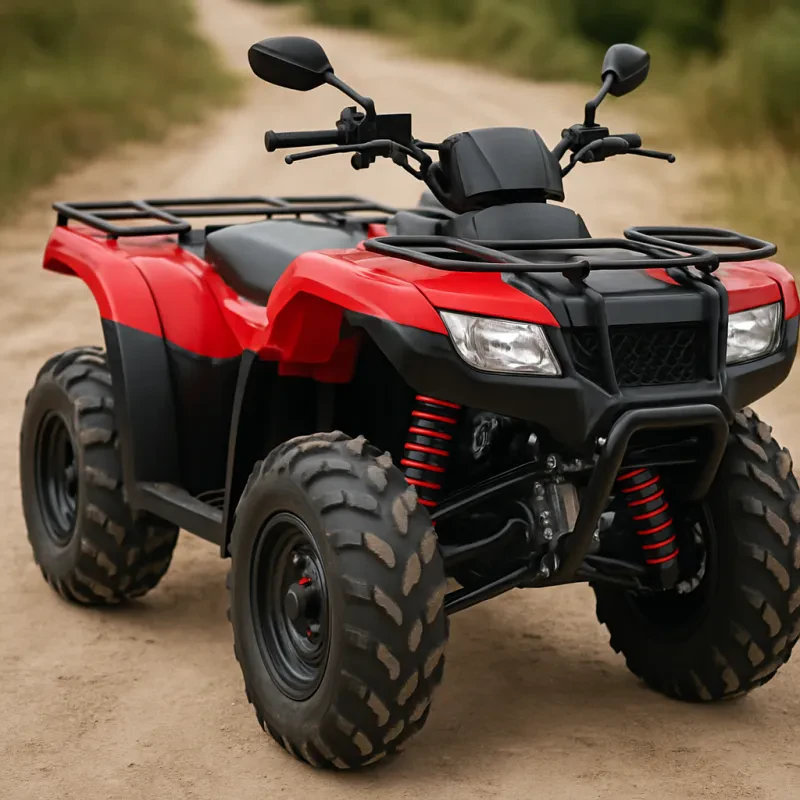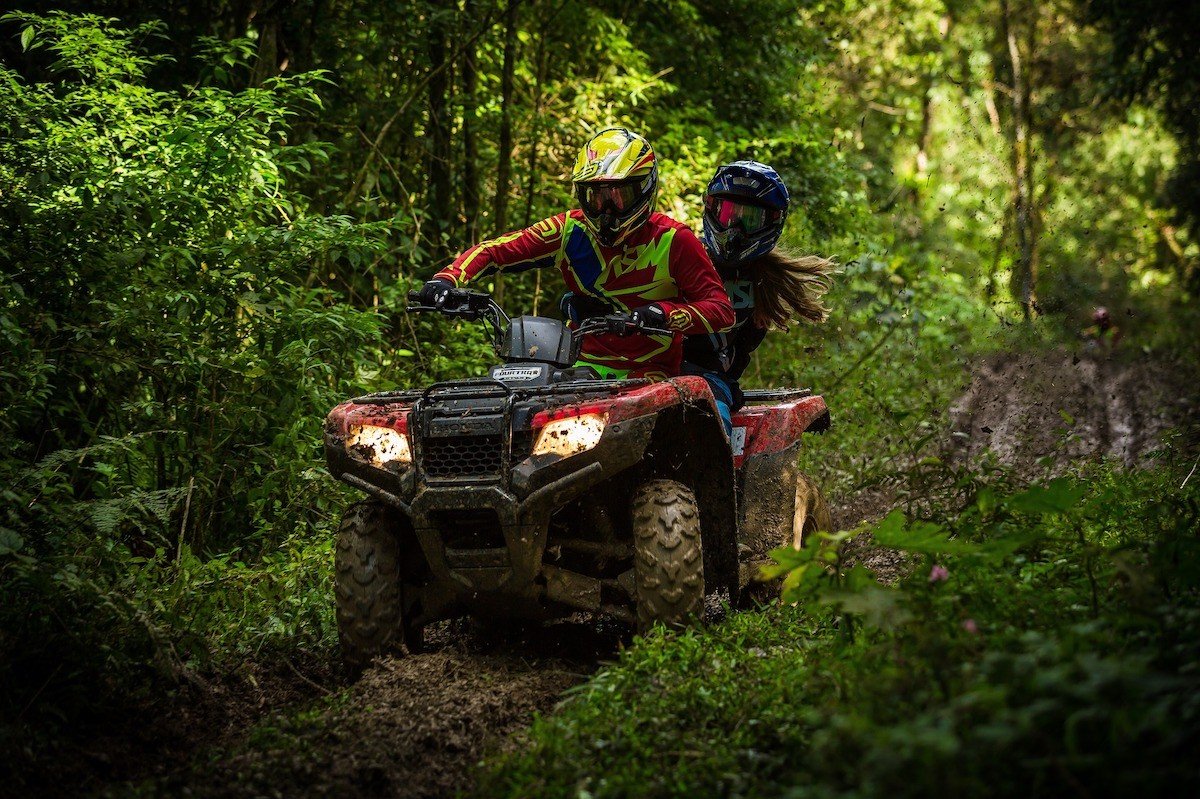Riding an ATV on rough terrain can be an exhilarating experience, but it also presents a unique set of challenges. When navigating rocky paths, steep inclines, or muddy trails, riders must be aware of both their surroundings and their vehicle's capabilities. Understanding these challenges is crucial for ensuring a safe and enjoyable ride. That's where the concept of Rough Terrain ATV Safety comes into play, providing essential guidelines for riders venturing off the beaten path.
One of the primary challenges in rough terrain is maintaining balance and control of the ATV. Uneven ground can cause the vehicle to tip or slide, especially when turning or descending steep hills. Riders should familiarize themselves with their ATV’s handling characteristics and practice maneuvering at different speeds in varied environments. This practice is key to enhancing stability and reducing the risk of accidents while tackling rough trails.
Another critical factor in rough terrain riding is the ability to identify and respond to obstacles. Debris, fallen branches, or sudden drops can appear unexpectedly, making it imperative for riders to stay alert. Riders should always scan the trail ahead and be prepared to adjust their path as needed. Incorporating Rough Terrain ATV Safety measures, such as wearing appropriate gear and using a spotter in particularly tricky sections, can further mitigate risks and enhance overall safety.
Lastly, understanding the terrain type and planning the route can significantly reduce challenges. Some areas may be more prone to erosion or mud, while others could include tricky rock formations. Before heading out, riders should research their destination and consider factors like weather conditions and trail difficulty. By doing so, riders can ensure they are adequately prepared for the demands of the terrain, reinforcing the importance of Rough Terrain ATV Safety for everyone involved.
Essential Safety Gear for ATV Riders
When it comes to Rough Terrain ATV Safety, having the right safety gear can make all the difference in ensuring a safe and enjoyable ride. Whether you are cruising through rocky trails or navigating muddy paths, wearing essential safety equipment is crucial for protecting yourself against potential injuries. Let's take a closer look at the must-have gear for every ATV enthusiast.
Firstly, a quality helmet is non-negotiable. Make sure to choose a helmet that meets safety standards and fits snugly to your head. A full-face helmet provides the best protection, shielding against impacts and debris. Additionally, consider helmets with built-in visors or goggles to enhance visibility and protect your eyes from dust, mud, and other flying particles.
Another important piece of safety gear is protective clothing. Wearing a durable, long-sleeved shirt and sturdy pants can help prevent abrasions in case of falls or scrapes. Look for gear made from materials that are both tough and breathable. Don’t forget to wear gloves, which not only provide grip for better control but also protect your hands from cuts and blisters. Finally, sturdy boots with ankle support are essential for maintaining stability and preventing injuries while riding on uneven surfaces.
Reflective vests or jackets are also a wise addition to your safety gear, especially if you plan on riding at dusk or dawn. High-visibility clothing increases your chances of being seen by other riders or vehicles, making it an important aspect of Rough Terrain ATV Safety. Always keep in mind that staying visible can significantly reduce the risk of accidents.
Tips for Navigating Difficult Trails
When it comes to enjoying the great outdoors on your ATV, navigating difficult trails can be both thrilling and challenging. To ensure a safe ride through these rough terrains, keep a few essential tips in mind. Understanding your vehicle’s capabilities and preparing for the unexpected is key to mastering any rocky path.
First, always perform a thorough pre-ride inspection of your ATV. Check the brakes, tires, and suspension to ensure they are in good working order. This step is crucial for Rough Terrain ATV Safety, as a well-maintained vehicle will handle better over bumps and obstacles. Don't forget to familiarize yourself with the trail ahead if possible; scouting the route can help you determine the best approach for tricky sections.
Next, approach steep inclines and declines with caution. When climbing, keep your weight centered and lean slightly forward to maintain balance. On descents, shift your weight back and use the engine to help slow your ATV rather than relying solely on the brakes. This technique is vital for enhancing Rough Terrain ATV Safety and preventing rollovers or loss of control.
Lastly, don't ride alone on difficult trails. Having a buddy can make a significant difference, especially in case of an emergency. Share responsibilities, such as spotting for each other on challenging parts of the trail. Always keep communication lines open, and consider carrying a first aid kit and tools for quick fixes. Together, you can tackle rough terrain more safely while enjoying the adventure!
Maintaining Your ATV for Safety
Maintaining your ATV is crucial for ensuring your safety while navigating rough terrain. Regular inspections and upkeep can prevent accidents and enhance your riding experience. Start by checking your tires; make sure they are properly inflated and free from cracks or excessive wear. Good tires provide necessary traction, especially when tackling uneven surfaces.
Next, pay attention to your brakes. Test them before every ride to ensure they respond promptly. If you notice any unusual noises or decreased stopping power, it’s time to get them checked. Additionally, inspect your lights and reflectors. Being visible to others is key to rough terrain ATV safety, especially in areas with poor lighting or during dusk rides.
Don’t forget about your ATV’s engine and fluids. Regularly change the oil and check levels of coolant, brake fluid, and fuel. A well-maintained engine not only runs smoother but also reduces the risk of breakdowns in challenging environments. Lastly, make it a habit to clean your ATV after rides. Mud and debris can cause long-term damage if left unchecked, so a quick wash can go a long way in preservation.

